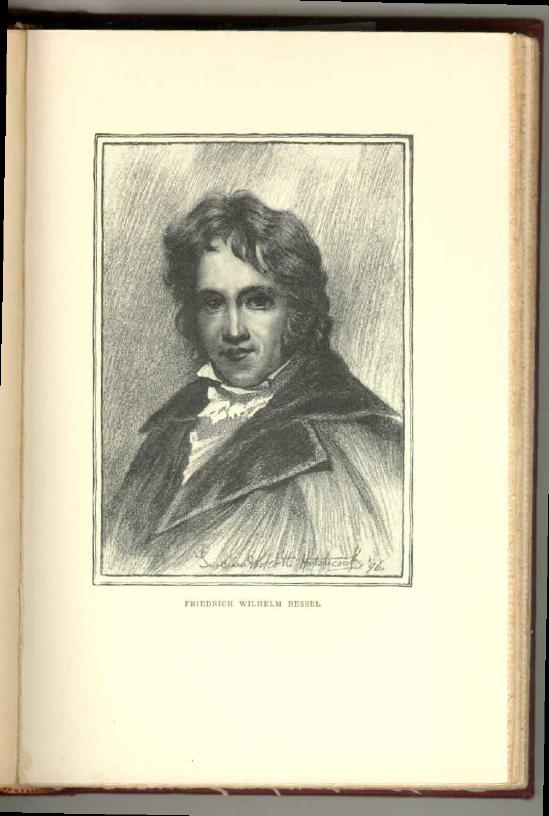| II THE PROGRESS OF MODERN ASTRONOMY A History of Science | ||
The Discovery of Neptune
As we have seen, the discovery of the first asteroid confirmed a conjecture; the other important planetary discovery of the nineteenth century fulfilled a prediction. Neptune was found through scientific prophecy. No one suspected the existence of a trans-Uranian planet till Uranus itself, by hair-breadth departures from its predicted orbit, gave out the secret. No one saw the disturbing planet till the pencil of the mathematician, with almost occult divination, had pointed out its place in the heavens. The general predication of a trans-Uranian planet was made by Bessel, the great Königsberg astronomer, in 1840; the analysis that revealed its exact location was undertaken, half a decade later, by two independent workers—John Couch Adams, just graduated senior wrangler at Cambridge, England, and U. J. J. Leverrier, the leading French mathematician of his generation.
Adams's calculation was first begun and first completed. But it had one radical defect—it was the work of a young and untried man. So it found lodgment in a pigeon-hole of the desk of England's Astronomer Royal, and an opportunity was lost which English astronomers have never ceased to mourn. Had the search been made, an actual planet would have been seen shining there, close to the spot where the pencil of the mathematician had placed its hypothetical counterpart. But the search was not made, and while the prophecy of Adams gathered dust in that regrettable

FRIEDRICH WILHELM BESSEL
[Description: Image of FRIEDRICH WILHELM BESSEL]Stimulated by this success, Leverrier calculated an orbit for an interior planet from perturbations of Mercury, but though prematurely christened Vulcan, this hypothetical nursling of the sun still haunts the realm of the undiscovered, along with certain equally hypothetical trans-Neptunian planets whose existence has been suggested by “residual perturbations” of Uranus, and by the movements of comets. No other veritable additions of the sun's planetary family have been made in our century, beyond the finding of seven small moons, which chiefly attest the advance in telescopic powers. Of these, the tiny attendants of our Martian neighbor, discovered by Professor Hall with the great Washington refractor, are of greatest interest, because of their small size and extremely rapid flight. One of them is poised only six thousand miles from Mars, and whirls about him almost four times as fast as he revolves,
| II THE PROGRESS OF MODERN ASTRONOMY A History of Science | ||